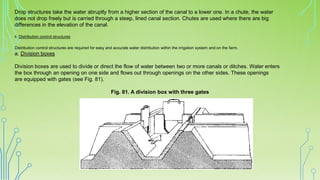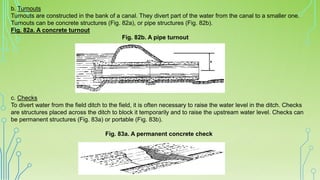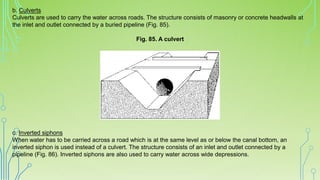The irrigation system consists of several interconnected components that work together to transport water from its source to agricultural fields. The main intake structure or pumping station directs water into the irrigation system from sources like reservoirs or rivers. The conveyance system then transports water through canals to the distribution system of field ditches. These ditches carry water to individual fields for application using various field irrigation methods. The drainage system removes excess water from the fields. Canal structures like drops, turnouts, checks, and weirs are used to control water flow and distribution throughout the system.


















